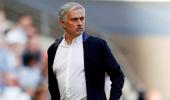Prajnesh Gunneswaran rose up the rankings chart to become India's No 1 player
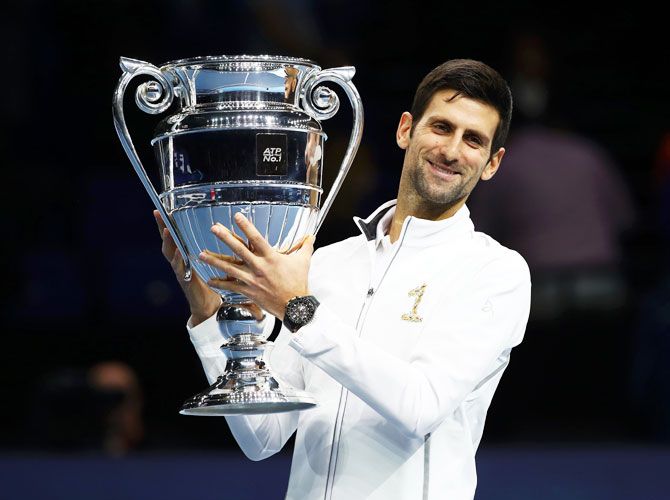
Young German Alexander Zverev's breakthrough title at the ATP Finals in London last month brought the future into focus but the year ended with men's tennis in the grip of a block of 30 somethings led by a resurgent Novak Djokovic.
Serbian Djokovic, 31, needed elbow surgery in February to cure a problem that surfaced in 2017, but after some jarring defeats he returned to the kind of domination he achieved in 2015, winning Wimbledon and the US Open.
Roger Federer continued to hold back the clock as only he can by winning the Australian Open, aged 36 and a few weeks later became the ATP's oldest world number one.
Rafael Nadal, 32, had an injury-hit year but that did not stop the Spaniard winning an 11th French Open title.
By the time the long season wrapped up, Djokovic, Nadal and Federer were one, two and three in the ATP rankings with seven of the top 10 aged 30 or over.

The eagerly-awaited return of Serena Williams to the women's game after giving birth to daughter Alexis Olympia last September failed to deliver the American a record-equalling 24th Grand Slam singles title, although she was tantalisingly close.
It is not the majestic tennis she played en route to the Wimbledon and US Open finals that will be remembered, however, but her controversial Flushing Meadows showdown against Japan's Naomi Osaka and the ensuing fall-out and allegations of sexism.
In one of the most infamous matches played in the New York cauldron, Williams raged after being given a code violation for 'off-court coaching' in the second set, got a point penalty for angrily smashing a racket and was docked a game for calling umpire Carlos Ramos a "liar".
Osaka, who has since turned 21, somehow stayed calm in the bedlam to beat her childhood idol, but was reduced to tears as the crowd booed during the post-match presentations -- angry at the perceived unfair treatment of the queen of women's tennis.
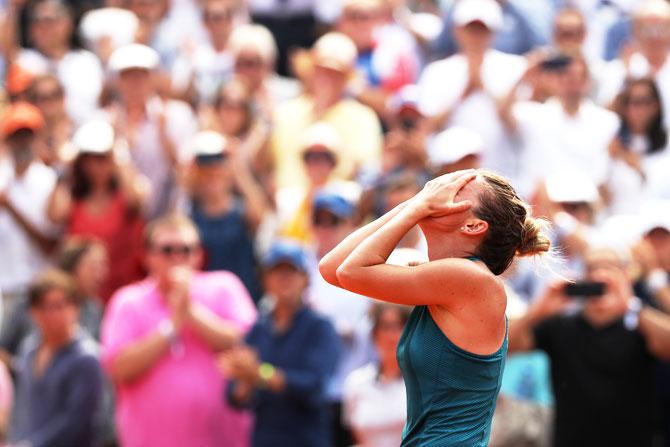
Patience paid off for two of the WTA's ultimate battlers.
Denmark's Caroline Wozniacki beat Simona Halep on an oven-like Rod Laver Arena to win the Australian Open and claim her first Grand Slam title, at the 43rd attempt.
A few months later Halep became the first Romanian to win a Grand Slam title for 40 years as she beat American Sloane Stephens at Roland Garros.
She had lost her previous three finals, including the year before in Paris from a winning position, but after losing the first set against Stephens roared back to claim the most popular victory of the year.
"In the last game I couldn't breathe, I just didn't want to repeat what happened the other years," Halep, who finished 2018 as world number one, said.
Germany's Angelique Kerber ripped up the script at Wimbledon. Serena Williams had looked unstoppable during a blazing fortnight on the All England Club lawns and was odds-on to claim an eighth singles title, equal Margaret Court's 24 slams and become the first mum to win Wimbledon for 38 years.
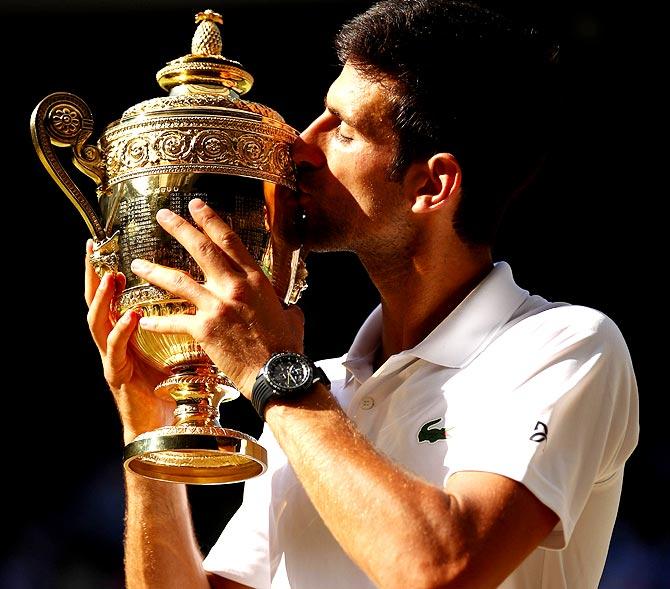
With support in the Royal Box from friend Meghan Markle, wife of Britain's Prince Harry, the stage was set for Serena but an inspired Kerber dropped just six games to become the first German woman to win the title since Steffi Graf in 1996.
That final was controversially played after the conclusion of the men's semi between Djokovic and Nadal, itself delayed by South African Kevin Anderson's epic, six-hour-36-minute defeat of American John Isner, 26-24 in the deciding set.
Djokovic took brutal advantage of a fatigued Anderson in the final and later in the year Wimbledon called time on "never-ending" matches as they announced that from 2019 onwards tiebreaks would be played at 12-12 in the decider.
Wimbledon lit the blue touch-paper for Djokovic who had entered the Championships seeded 12 after slipping to his lowest ranking since 2006.
After ending a two-year Grand Slam drought he went 28-3 for the rest of the year, including winning 16 consecutive sets to march to the US Open title where he beat Argentina's Juan Martin del Potro in the final.
That took him level on 14 Grand Slams with Pete Sampras and hunting Nadal (17) and Federer (20) on the all-time list.

Young guns like Zverev, Greek Stefanos Tsitsipas and Karen Khachanov are expected to chip away at the old order in 2019 but the changing of the guard is happening at a glacial pace.
Time has caught up with the 118-year-old Davis Cup, however.
This year's final, won by Croatia in France, was the last before a controversial revamp kicks in after sweeping changes were voted in by the International Tennis Federation.
Next November in Madrid, 18 nations will contest a soccer World Cup-style climax to the event.
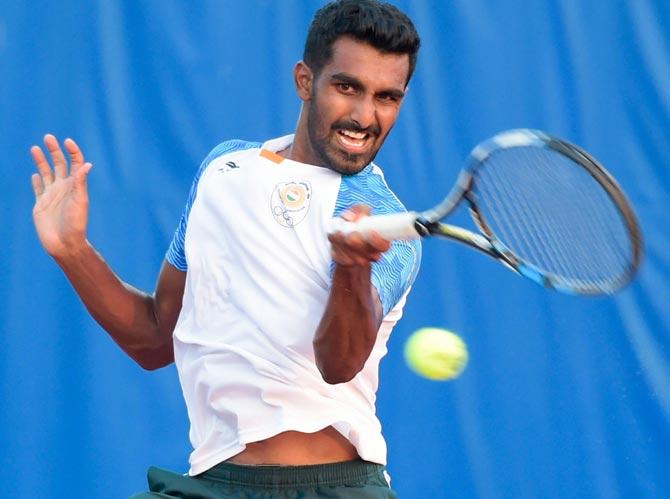
In India, the resurrection and rise of some players could hardly fill the overall vacuum in Indian tennis which endured its familiar share of disappointment and drama in 2018 amid a glimmer of hope for the future.
That the vacuum is real can be gauged from the fact that a 45-year-old Leander Paes is still India's biggest player, winning titles even this year, dropping no hints of retirement. It is a tribute to his longevity but also a reflection of the lack of depth in Indian tennis.
The younger lot did stride forward but none was big enough to shake up the circuit.
Prominent among the movers was Prajnesh Gunneswaran, who is a heartwarming tale of rising from the ashes.
For someone who appeared destined to be lost after being hampered by career-threatening knee stress fractures, Prajnesh's perseverance pulled him through.
From starting the year at 243rd in the rankings, the gritty left-hander overtook both Yuki Bhambri and Ramkumar Ramanathan to be the country's number one player at 107th.
An Asian Games singles bronze was the just reward for his never-say-die spirit which was earlier on display when he beat rising Chinese star Yibing Wu in the decisive fifth rubber in a Davis Cup Asia/Oceania group 1 tie in April.
Prajnesh's win came when country's top player Yuki Bhambri was not part of the tie due to injury.
That 6-4, 6-2 triumph sealed India's place in the World group play-offs. But the team itself could not go past that stage and is back in the qualifying round for the 2019 competition after a 0-4 loss to Serbia.
After making four finals this year on the Challenger circuit and converting them into two titles – Anning and Bengaluru – entering the top-100 is the next logical step for the 29-year-old Chennai-lad, who lost five crucial years to injuries.
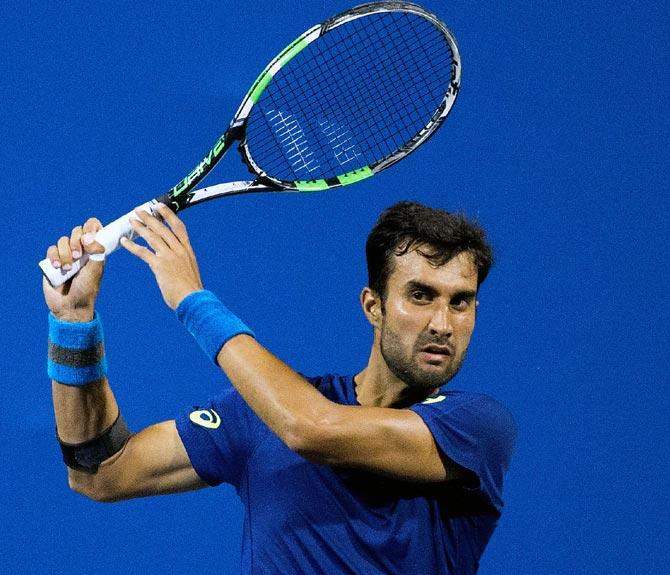
In contrast, both Bhambri and Ramnathan failed to realise the potential that has been spoken of ever since they arrived on the circuit.
In Bhambri's case, injuries were a major cause for his lack of growth. It was a stop-start year for Bhambri, who first made it to top-100 in 2015.
Ramanathan, on the other hand, has managed to remain injury-free but has mostly buckled under pressure. A testimony to his fitness is the 35 tournaments he played in 2018, something which also helped him keep his place in the top-150 despite moderate success.
Ramanathan's biggest result came when he made his maiden ATP 250 final in NewPort.
The depth in doubles got better for India with as many as seven players figuring in top-100 at one stage. At the year end, that number stands at five after Vishnu Vardhan and N Sriram Balaji dropped out.
Divij Sharan made the year his own. Despite losing trusted partner Purav Raja, the Delhi left-hander went on to become India's number one doubles player, overtaking Rohan Bopanna, who has been the country's best in this format.
Bopanna and Sharan combined to pick up India's fifth ever men's doubles gold at the Asian Games.
Sharan did not win an ATP title this year but he did play semifinals nine times apart from a quarterfinal appearance at the Wimbledon with Artem Sitak.
Now he and Bopanna have decided to pair up for 2019, keeping in mind the Tokyo Olympics in 2020.
Another player who deserves kudos this year is Jeevan Nedunchezhiyan, who played nine finals on Challenger circuit and won four titles. He also came close to winning his second ATP 250 level title but lost the final at Chengdu Open.
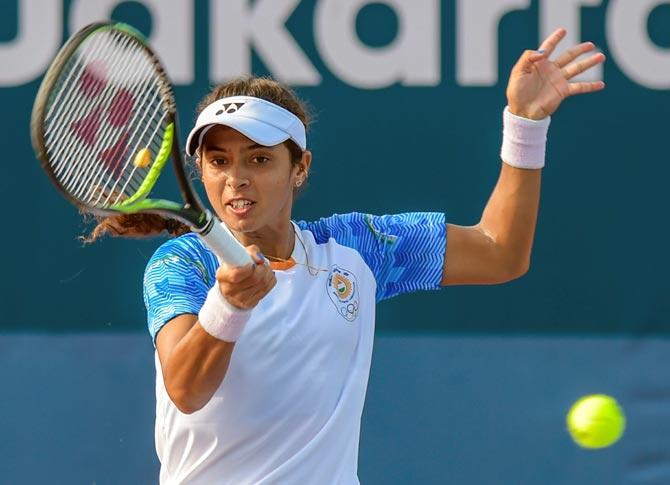
However, there was no stopping old warhorse Paes, who became the most successful doubles player in the history of the Davis Cup by winning his 43rd match in the competition.
His 11th-hour pullout from the Asian Games did raise a few eyebrows given that the reason cited was the denial of a partner of choice -- an issue which seems to crop up with alarming regularity before every major multi-sport assignment for Indian tennis.
In the women's circuit, trailblazer Sania Mirza was on maternity leave and was blessed with a son towards the end of the year. She is preparing to be back in action next year.
Among others, Ankita Raina was at her fighting best and Karman Kaur Thandi did show that she is one for the future on the women's circuit. Ankita won a rare singles bronze medal at the Asian Games.
Administratively not much changed but thanks to KSLTA and MSLTA, the Indian players made most of the home Challengers.
Prajnesh featured in both the finals, winning the Bengaluru Open against Saketh Myneni and ending a runners-up to Elias Ymer in Pune.
But it would take a lot more than that to make Indian tennis a force globally.
